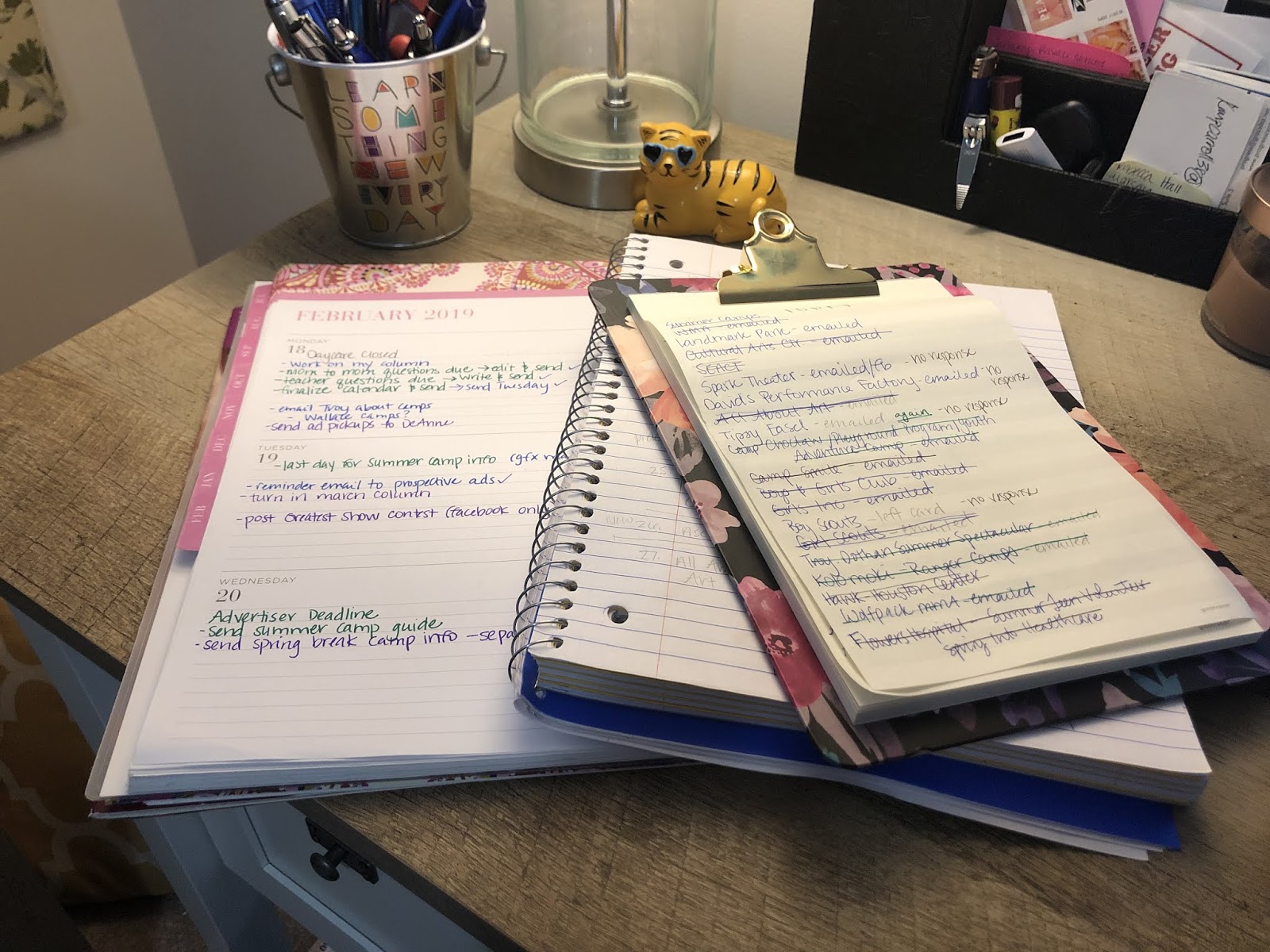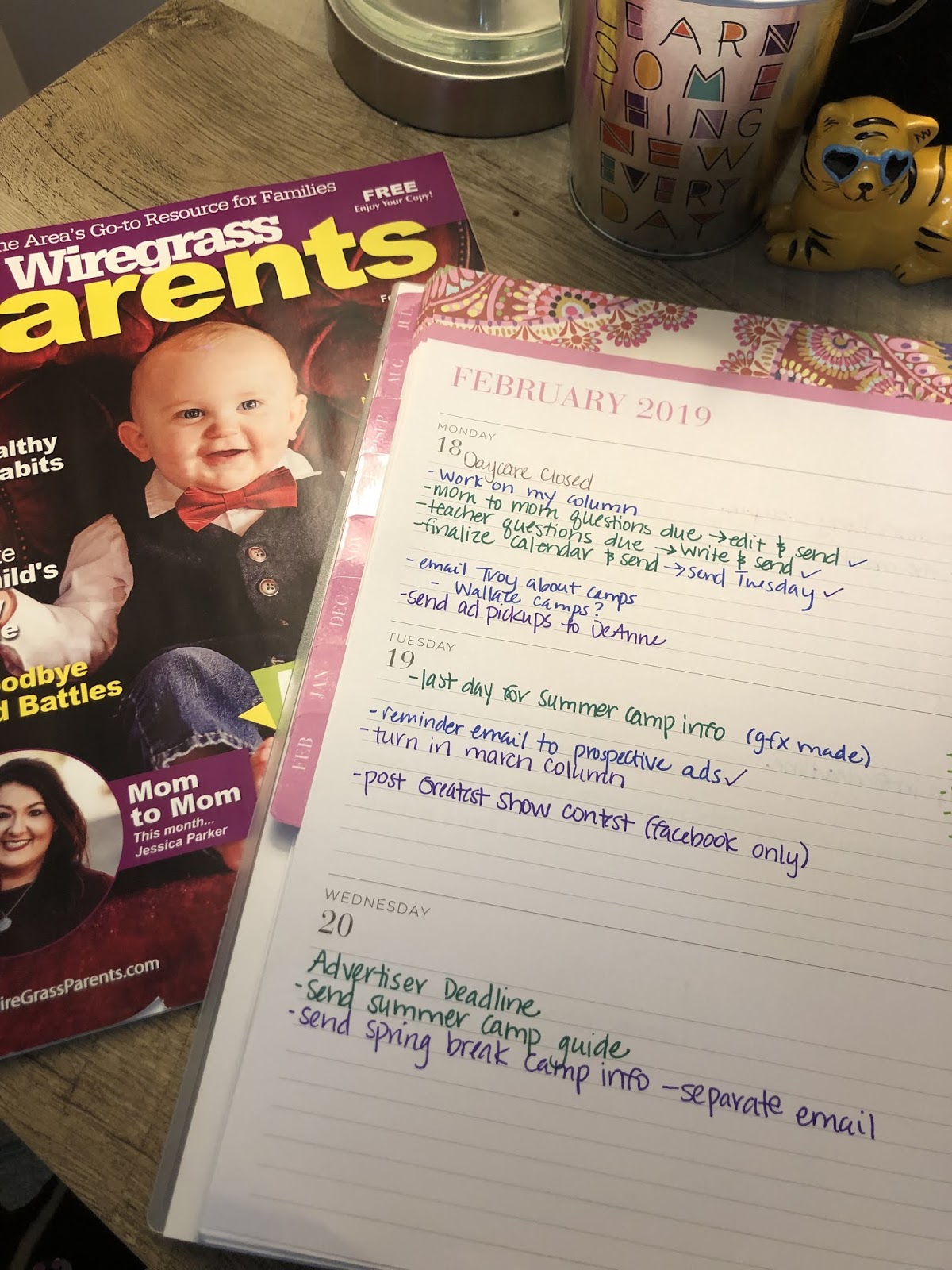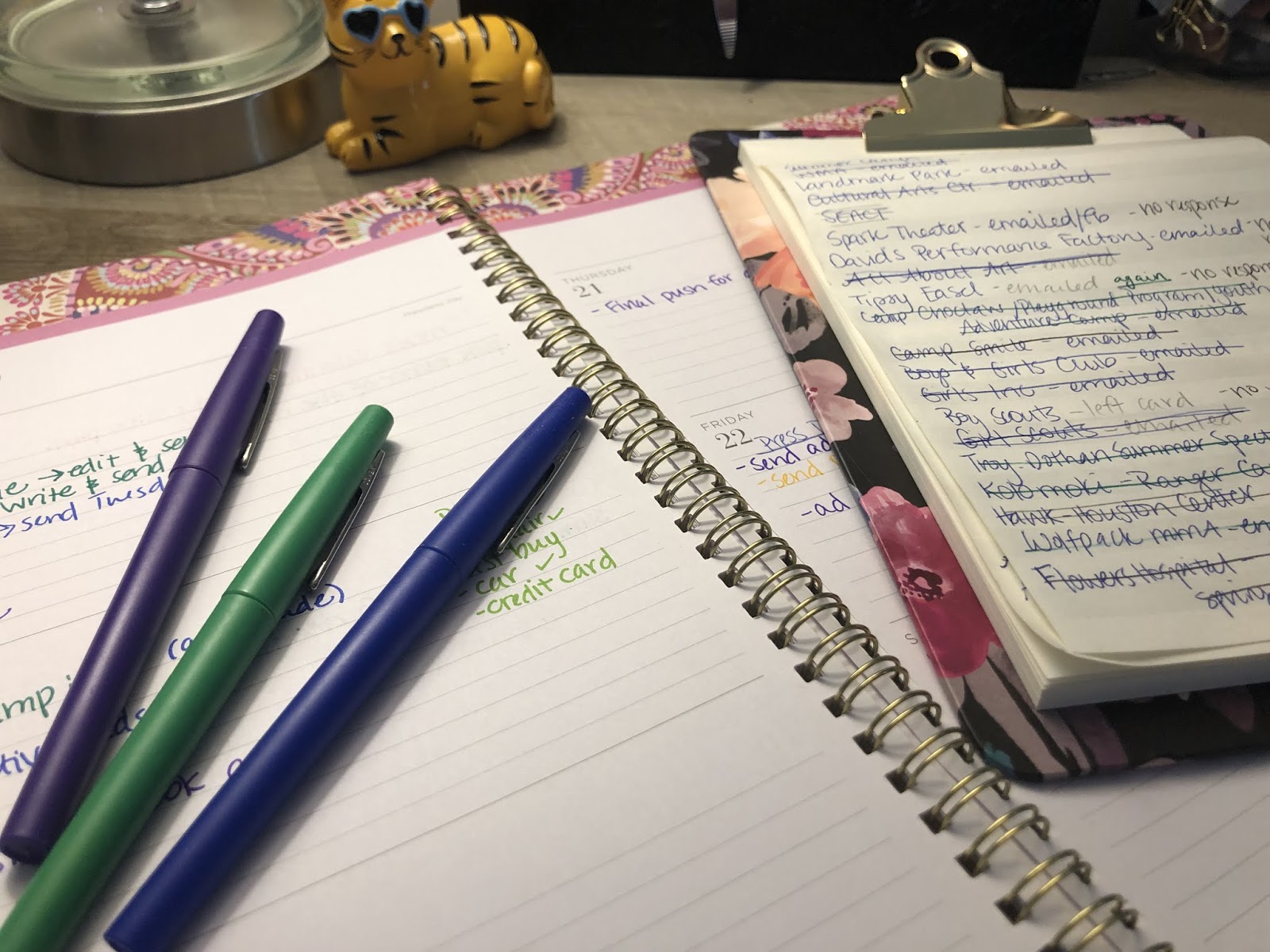
When I worked in TV news, my days were regimented and driven by deadlines. I was at work by 9:00 every morning, had my first show produced by 11:30, was in the control booth from noon until 12:30 every day followed by a short lunch break and an afternoon filled with editing other people's work and a mad dash to daycare.
Now, my deadlines are monthly and time is, well, fluid. In the first few months, I struggled with this new-found freedom. It was easy to let an hour-long break turn into an entire afternoon off. And then I changed the way I thought about each day. Instead of measuring my progress in the number of hours worked, I measured it by actual productivity and the things I got accomplished. It's been eight months since I made the switch from tv to work-from-home magazine publisher, and I think I've finally got a pretty good system going. So today I'm sharing the things I've been doing to plan and stay organized.

Planning
I use one planner for everything. I tried keeping two at one time, but that ended up just being confusing. There are a lot of different planners out there. I'm a fan of weekly and monthly planners, those that show the month at a glance followed by the weeks. For me, it is a must that each day has more than five lines for me to write on. I am not a fan of planners that break the days down by time.
I start by writing down all my important deadlines and appointments at the beginning of the month. At the start of each week I make what's essentially a to-do list for each day, writing down tasks to focus on so my days are productive. I also mark days that daycare is closed and when we have family engagements, birthday parties, etc., and keep up with my blog schedule.
I keep things color coded, but I don't have a real system. The colors change from month to month and even week to week. When I accomplish a task, I check it off. I used to draw a line through it but sometimes I have to check my progress and a simple check mark keeps things legible.
I also try to stay flexible. Sometimes I'm a little overzealous and schedule too many things for one day. If I don't accomplish everything, I move it to the next day. Other times I finish everything on my list in record time and start on the next day's goals.

Staying Organized
When I first started working from home, I was so overwhelmed by all the things I had to keep up with on my own. The first few months were frustrating trying to find a system of keeping up with who I had contacted about anything from advertising to requesting information. Planning for the monthly guides is another beast entirely. Not to mention keeping up with current advertisers and billing.
Now I know what you're thinking. Don't you have computer programs for all that stuff? You're right. I use Google Sheets to build my monthly guides and calendars; we have an online database for potential and current advertisers, as well as a separate program for billing; and of course we have our own email server.
All of that works great, but swapping between multiple internet tabs and your email window can get confusing. And I'm old-fashioned: I like writing stuff down.
I have a spiral notebook where I keep up with current advertisers. It's divided into months with columns for the business name, ad size, monthly price, billing date, and payment confirmation. I make all entries in pencil for easy adjustments. It's an easy reference that combines two separate digital systems.
My email is divided into folders and organized by month. Because our server isn't huge, this helps keep important messages from being archived and easily accessible. I also clean it up every month so I can start fresh and save space.
Even with my email system, keeping up with who I've been talking to can be difficult, so every month I have a written list of potential clients. Every time I send a follow-up email, I record the date. When they commit or decline, I make them off the list. In the last few months, this has drastically cut down on the amount of time I've spent on follow ups.
Summary
-Keep a planner
-Write down monthly, weekly and daily goals
-Stay flexible
-Use notebooks and lists to stay organized
I hope you were able to get some ideas about how to plan your own day and stay organized. No matter if you adapt my method or come up with something of your own, finding a system that works for you and sticking to it is key. If you've got a tried-and-true approach, let me know in the comments! I'm always looking for ways to improve.















No comments:
Post a Comment